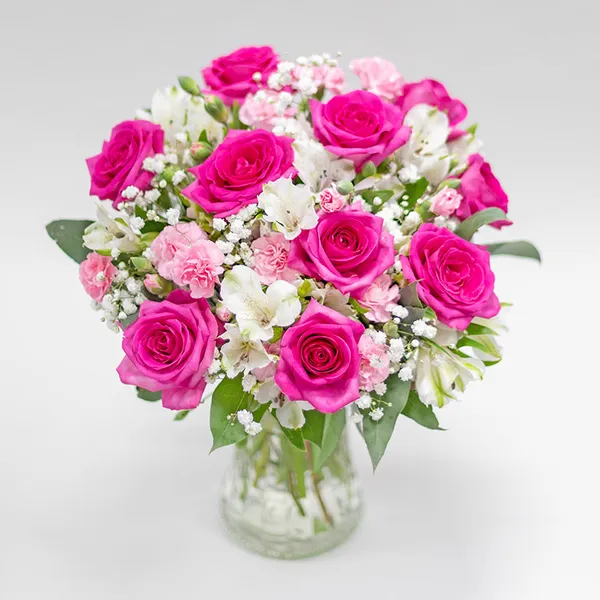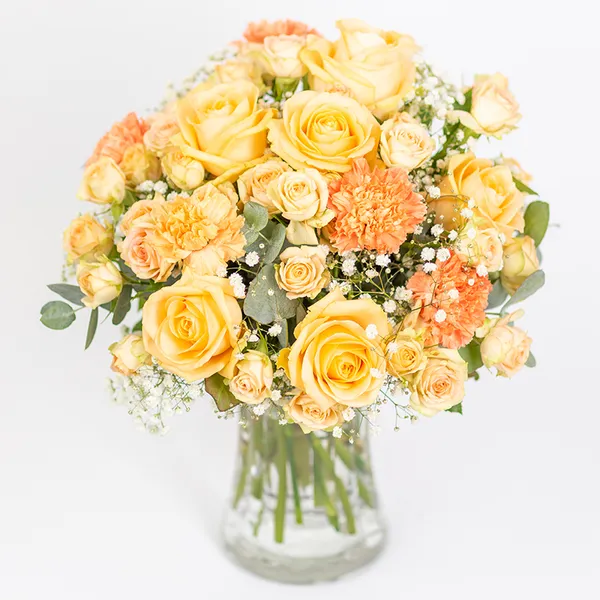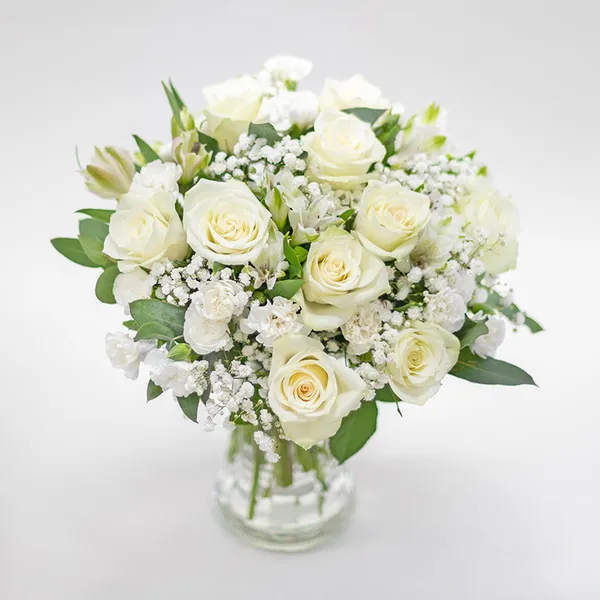Baby's Breath: The Delicate and Airy Floral Filler
Baby's Breath, with its tiny white flowers, is a classic bouquet filler. Its light, airy look symbolises purity, everlasting love, and innocence, making it popular for weddings and romantic events. It adds texture and fullness to arrangements, enhancing other blooms without overpowering them. Its simplicity and elegance make it a timeless favourite in floristry.
COMMON NAME
Baby's Breath
BOTANICAL NAME
Gypsophila paniculata
ORIGIN
Eastern Europe, Asia
PEOPLE ALSO CALL IT
Gyp, Maiden’s Breath
FLOWERING TIME
Summer, though available year-round
ASPECT
Full sun
SYMBOLISM
Purity, innocence, everlasting love
Care Tips for Cut Baby's Breath
Trim the Stems: Cut the stems at a slight angle before placing them in water to allow better hydration.
Use Floral Food: Adding cut flower food to the water helps keep the flowers fresh and long-lasting.
Refresh Water Regularly: Change the water every two days to prevent bacterial growth and keep the flowers vibrant.
Mist the Blooms: Gently mist the flowers with water to maintain their freshness and prevent them from drying out too quickly.
Avoid Direct Sunlight: Place the vase in a cool spot, away from direct sunlight and heat, to extend the vase life.
Symbolism & Meaning
Gypsophila is a symbol of purity, innocence, and everlasting love, which is why it is often used in wedding bouquets and arrangements. Its delicate, cloud-like appearance conveys a sense of lightness and simplicity, representing the beauty found in purity and grace. In addition to its romantic symbolism, Gypsophila is also used to celebrate new beginnings and joyful moments, making it suitable for baby showers and other joyful celebrations of life.
How to Dry Baby’s Breath
Select Fresh Stems: Choose stems that are in full bloom but still fresh, with no signs of wilting or browning.
Bundle the Stems: Gather the stems into small bundles (4-6 stems per bundle) and secure them with a rubber band or twine. Make sure the bundles are not too large, as this will help the flowers dry evenly.
Hang Upside Down: Hang the bundles upside down in a dry, dark, and well-ventilated area. A closet, attic, or any cool space away from direct sunlight works well, as this prevents the flowers from fading.
Leave for 1-2 Weeks: Allow the flowers to hang undisturbed for 1 to 2 weeks. Check periodically to ensure they are drying properly and are not affected by humidity or mold.
Store Properly: Once completely dried, store the Baby's Breath in a cool, dry place or use it immediately in arrangements. If storing, wrap the dried bundles in tissue paper or place them in a paper bag to protect them from dust and damage.
Frequently Asked Questions About Baby's Breath
Freshness Duration: Baby’s breath (Gypsophila) can last up to 2-3 days without water if kept in cool and shaded conditions. The flower’s small, delicate blooms are quite resilient, but prolonged exposure to dry conditions will cause them to wilt faster.
Tips for Longevity: To extend the freshness when kept out of water, you can mist the flowers lightly with water and avoid placing them in direct sunlight or warm areas. However, for the best results, it’s recommended to place them in water as soon as possible to maximise their vase life.
Blooming Season: Baby’s breath typically blooms from early summer to early autumn, usually from June to September, depending on the variety and growing conditions.
Flowering Duration: The plant produces small, cloud-like clusters of white or pink flowers that create a delicate, breezy appearance. Once in bloom, it can flower continuously for several weeks.
Optimal Conditions for Blooming: Baby’s breath thrives in full sun and well-draining soil. To encourage a prolonged blooming period, deadhead the flowers after the initial bloom to stimulate further flowering.
Yes, baby's breath can be toxic to cats. If a cat ingests it, symptoms such as vomiting, diarrhea, lethargy, and reduced appetite may occur. Therefore, it is important to keep this plant out of reach of cats. If your cat has nibbled on baby's breath and shows any of these symptoms, consult a veterinarian immediately.



